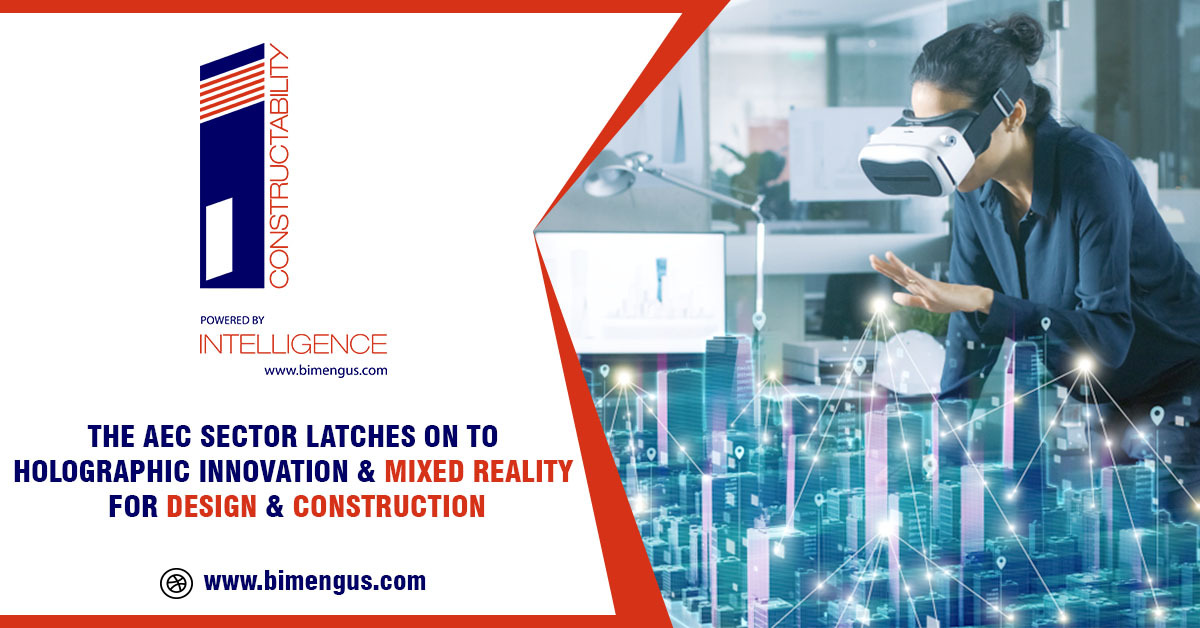Mixed Reality is, and will change the way AEC professionals design, build, and manage construction projects. This where the thin line between fiction and reality will tend to diminish for onsite construction.
AR& VR have already set a strong footing in the construction sector wherein project stakeholders can visualize 3D models and complete walkthroughs in a VR/AR environment. They know how each element or object looks like, and where it should be placed in a 3D model. VR/AR has worked in synergy with Building Information Modeling (BIM) wherein BIM modelers can build photo-realistic models and renders based on integration from every trade viz. architecture, structure, MEP, and FP.
There is another technology in a town called “Mixed Reality”
Mixed reality is the combination of real and virtual environments wherein digital and real objects, entities, spaces, or components interact with each other, and build an immersive environment that helps project stakeholders view real spaces overlaid with holograms or holographic data from a 3D BIM model. Using state-of-the-art hardware and software, construction companies can leverage information interaction and collaboration for offsite and onsite personnel. The benefits of mixed-reality move further than real-time data or information sharing or collaboration.
This technology is great for large and complex infrastructure contains a lot of remodeling. This helps stakeholders realize the difference between what needs to be achieved and what is already there. The two main players in the mixed reality scenario HoloLens and Trimble. The integration of hardware and software is robust wherein the glasses are fixed with a holographic processing unit, and this is mounted on a standard-issue hard hat used by construction personnel. The software helps construction personnel combine models from various trades, and shows it in a 1:1 scale onsite. This helps onsite personnel review 3D models in a real environment. Various gestures and voice commands can be used to navigate through content.
How is Mixed Reality helping construction personnel build better and safer?
Enhanced Productivity through digital visualization
By visualizing and walking through objects and spaces in a digital environment, teams can look at a singular model and suggest changes in the preconstruction stage itself. This helps reduce the number of RFI’s and reduce rework during the coordination phase. This presents a lot of opportunities to shorten the duration of project schedules, reduce costs, mitigate rework, project tracking, and augment BIM workflows.
Streamlined Collaboration between the office and field
The adoption of mixed reality helps offsite and onsite personnel stay on the same page. This also helps project stakeholders determine clashes or differences in the as-built environment and the 3D model. Field personnel can exuberate greater collaboration, coordination, and tracking with mixed-reality.
Better Quality Assurance at the earliest stages of the project lifecycle
Mixed Reality plays an important role in augmenting quality assurance and clashes at the earliest stages of the project lifecycle. It helps GC’s review and approves crucial designs and models through total interaction and constructability of complex projects before components are fabricated for onsite installation. Using mixed reality, components or objects can be prefabricated so that it mitigates rework and saves on cost and time.
Challenges Mixed Reality can solve
- Boost decision making and reduction in project downtime through communication or collaboration
- Track project progress, identify anomalies and maximize BIM adoption
- Build clear and transparent design intent for stakeholders
- Use AR/VR to build high-impact walkthroughs
Wrapping it up
AR, VR, and Mixed Reality have their pros & cons, but the idea is integrating all these technologies to build a robust Mixed Reality platform based on cutting-edge technology for onsite personnel wherein they know what needs to be done, and even get an instantaneous reaction based on real-time information sharing.
